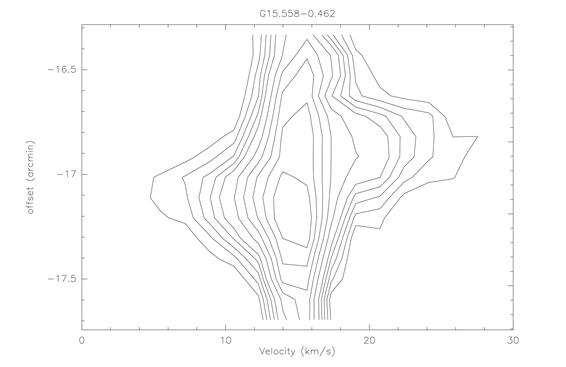High-mass Outflows Identified from COHRS CO (3–2) Survey
Molecular outflow is one of the significant and common features in star formation regions. The transition of angular momentum and radiation pressure makes star-forming continually proceeded and injects enough energy as turbulent energy origin.
The identification of 157 outflow candidates largely add massive outflow sample using CO data from JCMT, which provides abundant sample for massive star formation investigation of high resolution. These outflow candidates include complete range in their evolutionary states. We find that the outflow detections and the mass-loss rate of the outflows are proportional to evolutionary stages. We also find there is unclear evidence shows higher mass outflows have different launching conditions than low-mass outflows.

Position of G15.558-0.462 High-mass Outflows (Velocity)
The related work has recently been published in The Astrophysical Journal (ApJ, 2018, 867,167).
Article Link:http://cdsads.u-strasbg.fr/abs/2018ApJ...867..167L

